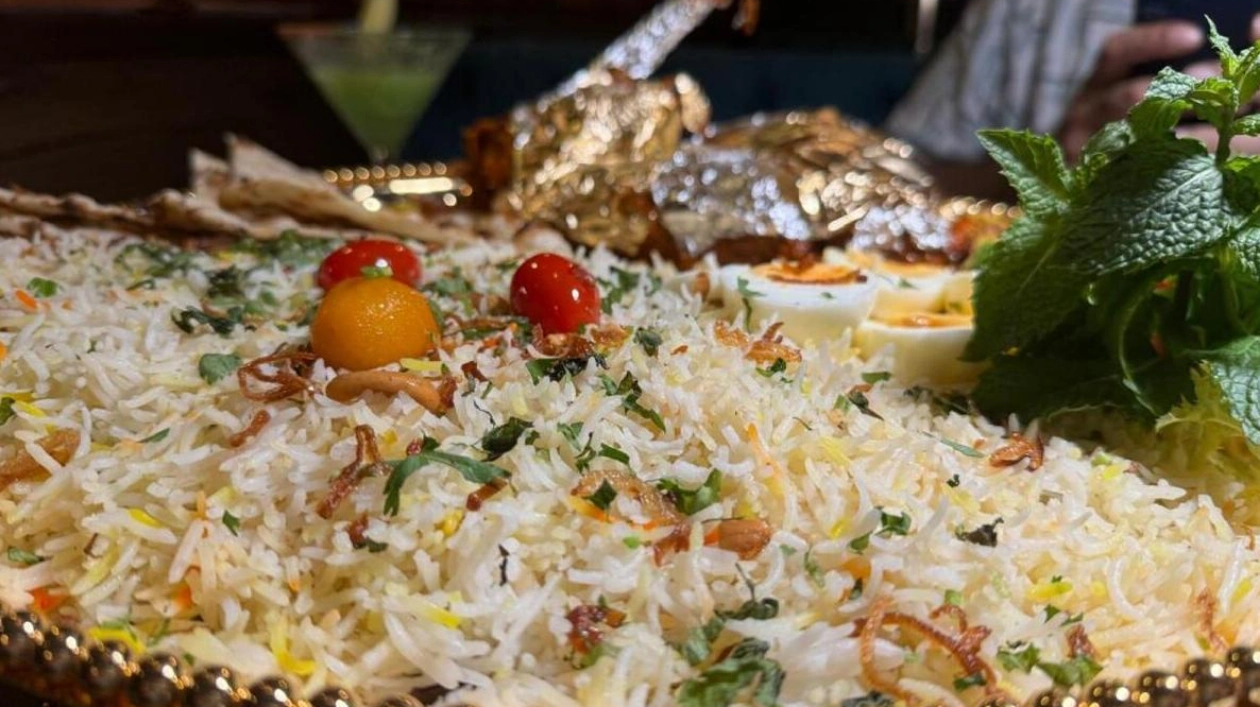Marrying into a Hyderabadi family means one thing above all: in our household, we take our biryanis very, very seriously. This means that not just any rice and meat dish will do. Logic would suggest that with as many biryani styles as there are Indian states, one should be forgiving if a particular flavor doesn’t hit the spot. But when it comes to biryani, logic takes a backseat – it’s all about the spices, the need to savor that melt-in-your-mouth meat (which could be mutton, chicken, or even fish), and the fluffy yet distinct grains of rice.
So, with a mix of anticipation and anxiety, I convinced my husband to dine at Kovalam in President Hotel Dubai. They have a new, soon-to-be-launched offering that we were eager to try: the Sultan-e-Raan Biryani, topped with 24-karat gold. This lavish dish is one of many that will be available from September 20 to September 30 during the eatery’s Great Indian Biryani Carnival.
Vinod Naik, Executive Chef of President Hotel, explains the festival’s concept: “It stems from our passion for celebrating India’s diverse culinary traditions. Biryani is one of the most popular and iconic dishes in Indian cuisine, and we wanted to showcase its variety and depth. With the theme ‘Great Indian Biryani,’ we aim to provide a culinary journey where guests can experience the flavors of different regions, each with its own unique spices and techniques.”
For the average (or biryani-obsessed) diner, this means a plethora of rich dishes to choose from, ranging from Hyderabadi Nawabi Dum Biryani to the exotic Bride Show Parda Biryani and even a Quinoa Biryani. But back to the most opulent biryani in the UAE – why serve a mutton leg, marinated for hours, cooked to perfection, drenched in gravy, and then topped with gold and silver foil? Naik explains that the addition is a nod to luxury. “Silver and gold have a long tradition in Indian cooking, symbolizing luxury and prosperity. Adding these elements elevates the dish, providing an experience that is pleasing both visually and gastronomically. It’s also a tribute to the royal heritage of biryani, once served at the courts of emperors and nawabs.”
The dish, served on a platter large enough to feed at least four hungry biryani enthusiasts, also comes with naan (flatbread) and extra gravy. “We wanted to enhance the experience by including naan. It complements the biryani’s flavor beautifully and offers diners the choice of enjoying the biryani on its own or pairing it with soft, freshly cooked naan for an added layer of texture and flavor,” explains the chef.
But where does this recipe fit in? According to my purist husband, “not in Hyderabad.” Naik, however, clarifies: “Our biryani is a fusion dish inspired by various regions. But if we had to categorize it, it leans towards the Hyderabadi style with its spices, layers of rice, and rich preparation. We’ve also incorporated influences from Lucknow biryani, particularly in the aroma and the complexity of the taste.”
At Dh389, this biryani is on the pricier side, but the portions are generous, the flavors are rich, and it makes for a visually stunning presentation.






